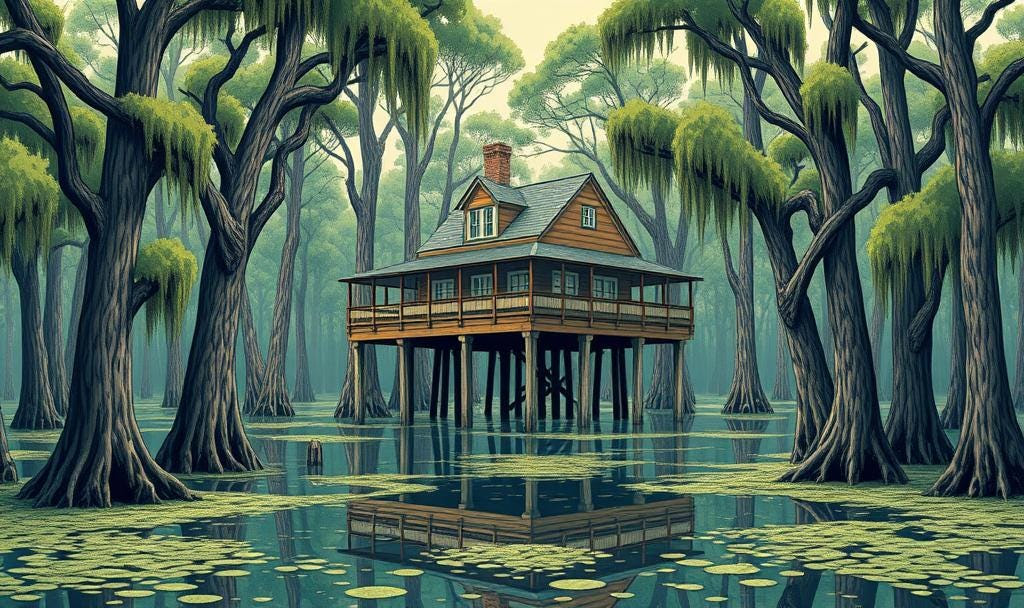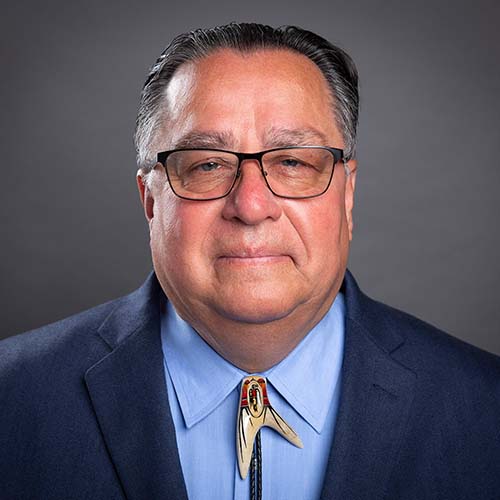
- Details
- By Professor Victoria Sutton
Guest Opinion. Although I grew up in the Appalachian Mountains of North Carolina; I feel at home in Pembroke, N.C. on the coastal end of the state; with the long leaf pines and swamps filled with cypress trees, partly submerged sheltered in shade, partly reaching for the sun. The Lumbee Indian Tribe in Pembroke is officially also known as the People of the Dark Water, reflecting the deep black color of the swamp doing what it does well — breaking down previously used organics for use by the next generation of biological organisms.
Pressure from colonists from Virginia to South Carolina made the swamp an attractive refuge for the Indigenous people in that region to live somewhat at peace with encroaching settlement. Where settlers saw the swamp as full of deadly animals and disease, the Lumbee people saw its value with its unique gifts from the Creator. Living and thriving in the swamp requires ecological knowledge and skill that the Lumbee people have developed over centuries — what plants are medicine, what animals are family, which animals are to be respected but avoided and teaching the next generation.
Hurricane Matthew in 2016 caused significant damage, and some damage was lasting. More submerged lands in the Lumbee community resulted. Yet the Lumbee Indian community is almost one hundred miles from the eroding coast of North Carolina on the Atlantic Ocean. It is almost certain there will be significant land loss over the coming decades, due to rising water table levels that never return entirely to their previous lower level, until the table reaches the surface of ground level and land is lost to human footing. While complete displacement is not likely at least for this century, mitigation for flooding is almost certainly an increasing necessity.
It is this dynamic that calls for the resilience for which the Lumbee Indian Tribe is known, to adapt and mitigate these environmental forces that are constantly changing.
After spending some time in Pembroke this week, I left and traveled directly from Pembroke, N.C. to the United Houma Nation in Louisiana. The United Houma Nation has land in the bayou region of Louisiana that has been submerging to the point that evacuation was necessary. In Houma, Louisiana I observed the first displacement and resettlement project of Indigenous people in the continental United States due to soil submersion.
Submersion is not the only existential problem. We have had displacements in Alaska among the Native Alaskan Villages. At least one Alaskan Village, Newtok, had to move due to melting permafrost, making their territory uninhabitable. The Native Alaskans knew from their own traditional knowledge that this would be uninhabitable and have been planning for the move for at least two decades. In September 2024, the last 71 residents moved to Mertavik, the resettlement village, joining 230 others who began moving in 2019. “They will become one of the first Alaska Native villages to complete a large-scale relocation because of climate change.” Climate change, while it can be slowed, is going to continue to change and mitigation is where planning should be focused.
The United Houma Nation is the first Native American Tribe in the continental United States to be resettled due to the inundation of their land by rising sea levels at the coastal edges of our states with the lowest lying lands.
The United Houma Indian Nation in Louisiana
April 30, 1803, the United States signed the Louisiana Purchase Treaty with France. In that Treaty, Art. 6 was dedicated to dictating the agreement for the United States to recognize the existing government to government relationships and signed treaties with the Indian Tribes:
Article VI:
The United States promise to execute Such treaties and articles as may have been agreed between Spain and the tribes and nations of Indians until by mutual consent of the United States and the said tribes or nations other Suitable articles Shall have been agreed upon.
This includes some of the Tribes yet to be federally recognized, more than two centuries later. One of these, the United Houma Nation, composed of about 7,000 citizens throughout Louisiana, eventually found ground to settle beyond insurmountable settler pressures in the bayou region of the state. This is a beautiful ecosystem, filled with biodiversity and providing a filter for purifying water that is returning from the Mississippi River into The Gulf (Gulf of America, today). It is also vulnerable to sea level rise and the natural occurrence of island submersion.
The Isle de Jean Charles has shrunk to 320 acres from its more than 22,000 acres in the 1950s. It is home to citizens of the United Houma Nation. Hurricane Katrina and Ida left lasting damage and submersion, and the Deep Horizon oil spill caused irreparable environmental damage to the lands. The United Houma Nation was never compensated for it while other Tribes were compensated with the settlement, due to the arbitrary nature of political federal recognition. The federal government disregarded Art. 6 of the Louisiana Purchase Treaty.
But the U.S. has helped with the resettlement project. “New Isle” was established as the resettlement for the residents of Isle de Jean Charles, both native and non-native. The new settlement is about 70 miles north of the Isle de Jean Charles in a less flood-prone area near the Chevron facility in Schrievner, Louisiana (not far from Houma, Louisiana).
In August 2022, the residents began moving into the development for which a $56.5 million dollar grant was made available through NOAA’s Climate Resilience Regional Challenge, separate from the funds to resettle the community with a new house in exchange for their lost property now declared “marsh”, from the Louisiana Community Block Grant funding process.
Meanwhile, island nations throughout the world are at risk for inundation and submersion.
Worldwide threats to coastal and island Indigenous Peoples
Island and atoll nations, many with all or part of the population, Indigenous Peoples, are similarly experiencing island submersion and loss of land. Island Nations with high ground or central mountains potentially have high ground to which to retreat when the coastal areas are submerged like the Fiji Islands; however, it all involves significant displacement, some needing new geographical Nations all together.
In the South Pacific, Indigenous Islanders of Kiribati became the world’s first climate change refugees. Although the UN Refugee High Commissioner does not recognize climate change refugees as a legal refugee category, “climate refugee” has been coined as a way to describe their displacement, but “environmental refugee” is probably more accurate. Tuvalu is also likely to be submerged. The Tuvalu Foreign Minister, famously gave his address for the 26th meeting of the parties to the climate change agreement standing in the ocean. The Marshall Islands, another atoll island nation and a nation under a compact with the U.S., is also at risk.
In the Caribbean, the Grand Bahama Island is at high risk of submersion, as well as Trinidad and Tobago. Hurricane Dorian produced flooding that was not followed by a full recovery in the Bahamas, illustrating the way in which submersion takes place — fits and starts, not all at once but major events that become cumulative submersions.
Reflecting on Resilience
The Indigenous Peoples who are resettling in new areas take their traditional ecological knowledge with them to adapt to new areas but a lot is lost with the place where the traditional ecological knowledge was gained. Others may be able to stay and adapt, like the Lumbee Indian Tribe; whereas, the United Houma of Louisiana will have to resettle and reestablish custom and tradition. They are moving only 70 miles away, but like the Fijians, moving from the coral reef environment to a mountain environment is a world apart and new ecological knowledge will be built over time. Indigenous Peoples are still here today because they are resilient. Moving from one territory to another over millennia is part of normal ecological change, human migration and human conflict. These Indigenous Peoples are resilient, and will build again. The knowledge that is being built in today’s first resettlements will become important traditional knowledge to share for future resettlements.
To read more articles by Professor Sutton go to: https://profvictoria.substack.
Professor Victoria Sutton (Lumbee) is a law professor on the faculty of Texas Tech University. In 2005, Sutton became a founding member of the National Congress of American Indians, Policy Advisory Board to the NCAI Policy Center, positioning the Native American community to act and lead on policy issues affecting Indigenous communities in the United States.
Help us tell the stories that could save Native languages and food traditions
At a critical moment for Indian Country, Native News Online is embarking on our most ambitious reporting project yet: "Cultivating Culture," a three-year investigation into two forces shaping Native community survival—food sovereignty and language revitalization.
The devastating impact of COVID-19 accelerated the loss of Native elders and with them, irreplaceable cultural knowledge. Yet across tribal communities, innovative leaders are fighting back, reclaiming traditional food systems and breathing new life into Native languages. These aren't just cultural preservation efforts—they're powerful pathways to community health, healing, and resilience.
Our dedicated reporting team will spend three years documenting these stories through on-the-ground reporting in 18 tribal communities, producing over 200 in-depth stories, 18 podcast episodes, and multimedia content that amplifies Indigenous voices. We'll show policymakers, funders, and allies how cultural restoration directly impacts physical and mental wellness while celebrating successful models of sovereignty and self-determination.
This isn't corporate media parachuting into Indian Country for a quick story. This is sustained, relationship-based journalism by Native reporters who understand these communities. It's "Warrior Journalism"—fearless reporting that serves the 5.5 million readers who depend on us for news that mainstream media often ignores.
We need your help right now. While we've secured partial funding, we're still $450,000 short of our three-year budget. Our immediate goal is $25,000 this month to keep this critical work moving forward—funding reporter salaries, travel to remote communities, photography, and the deep reporting these stories deserve.
Every dollar directly supports Indigenous journalists telling Indigenous stories. Whether it's $5 or $50, your contribution ensures these vital narratives of resilience, innovation, and hope don't disappear into silence.
 The stakes couldn't be higher. Native languages are being lost at an alarming rate. Food insecurity plagues many tribal communities. But solutions are emerging, and these stories need to be told.
The stakes couldn't be higher. Native languages are being lost at an alarming rate. Food insecurity plagues many tribal communities. But solutions are emerging, and these stories need to be told.
Support independent Native journalism. Fund the stories that matter.
Levi Rickert (Potawatomi), Editor & Publisher
